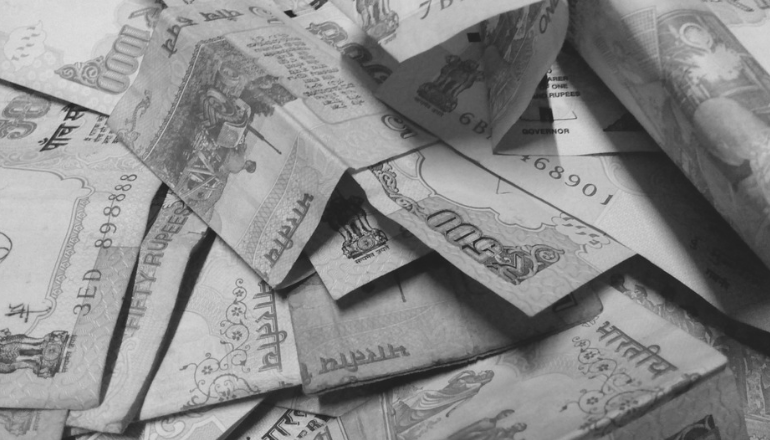The problem of ‘black money’ has plagued India for a while and has become a major political issue in the recent past. In this brief piece, we examine the measures the Government of India (GOI) seeks to implement to address this problem and how this fits into a larger and a more global problem of tax evasion. To those unaware with the concept of black money, ‘black money’ essentially refers to undisclosed funds and monies, on which income and other taxes have not been paid. There are also additional concerns on the acquisition of such funds and the underlying activities through which such funds may have been realised. Recent reports have thrown up astronomical figures to quantify India’s ‘black money’ economy but even on a conservative estimate, one could peg this at INR. 28 Trillion (approximately USD 40 billion), a staggering 30% of India’s gross domestic product.
Most of India’s blac k money is concealed in offshore jurisdictions and may have been typically exported in violation of India’s foreign exchange control regime. The Swiss National Bank estimates that in Swiss banks alone, deposits by Indian citizens aggregated to INR. 92.95 Billion (over a billion USD) by the end of end of 2010.
k money is concealed in offshore jurisdictions and may have been typically exported in violation of India’s foreign exchange control regime. The Swiss National Bank estimates that in Swiss banks alone, deposits by Indian citizens aggregated to INR. 92.95 Billion (over a billion USD) by the end of end of 2010.
The Panama Papers
The Panama Papers (Papers) leak brought to the fore the concealment of assets by individuals and political figures from public and government scrutiny. Preliminary investigations in this regard have further indicated that wealthy individuals and world leaders were using a maze of offshore companies to facilitate tax evasion and probable financial fraud. As such, and as demonstrated by the Papers, it remains that offshore tax evasion is rampant and the GOI may need to take definitive action to deal with the issue.
In this respect, even before the Papers leak, the GOI had issued a white paper on black money[1]. Published in May 2012, the white paper set forth various aspects in relation to black money, reported the policy options that were available to the GOI and also enunciated the strategies that the GOI was pursuing in the context of recent initiatives in this regard.
The Response in India
Acting on the information provided through the Papers, it is likely that the recently formed Special Investigation Team (SIT) on black money will initiate investigations regarding the 500 Indian nationals named in the Papers. Additionally, India’s domestic laws, as they stand today, may also help in tackling this problem. Briefly, the Indian tax regime provides for an end-to-end reporting mechanism beginning with financial statements, audit of expenses for tax computation, price determination and reporting of inter-group transactions, etc. This is further supported by a robust (but slow and overburdened) tax administration system wherein the revenue authorities verify information reported by tax payers. Accordingly, in cases where the ‘escaped’ or undisclosed income relates to assets (including financial interest in any entity) located outside India, Indian tax laws would enable the GOI to re-open assessments up to 16 years from the end of the relevant assessment year.
As part of its global efforts, India has also set up Income Tax Overseas Units, signed various Double Tax Avoidance Agreements (DTAA) and Tax Information Exchange Agreements. It is also a signatory to the Foreign Account Tax Compliance Act (FATCA) and Common Reporting Standard (CRS) released by the Organization for Economic Co-operation and Development. Under FATCA and CRS, investors will have to give complete and correct information about their tax residency and financial assets. This information will then be reported by financial institutions to the relevant country’s authorities. The respective authorities will process the information received and scrutinise cases where they find discrepancies between the data reported by the tax payer and information received by the authorities.
Whilst the above steps ensure two-way exchange of information (i.e. receiving and sharing of information by India with other countries), India has also recently enacted the Black Money (Undisclosed Foreign Income and Assets) and Imposition of Tax Act, 2015 (the BM Act) to deal with black money within India. The BM Act primarily intends to deter the concealment of black money abroad, by providing for a harsh penalty regime for undisclosed foreign income and assets. Such income would not be taxed under the Income Tax Act, 1961 (IT Act), but under the provisions of the BM Act. The BM Act provides for higher rates of tax and penalty and stringent prosecution provisions. The enactment of the BM Act was also preceded by introducing stringent disclosure requirements by Indian resident assessees whilst furnishing their annual income tax returns in India.
Pursuant to the recent Union Budget 2016, the Finance Minister announced a one-off four-month compliance / disclosure window for domestic black money holders to come clean and clear past transgressions by paying tax and penalty on them to the tune of 45%. This includes paying tax at 30% on any undisclosed income represented in any form of assets, plus a surcharge at 7.5% and a penalty at 7.5%. Further, the GOI is currently undertaking a 360 degree profiling of Indian residents and is collecting a significant amount of data regarding their spending habits.
Beyond India
The GOI has recognised that there exists a pressing need to formulate a comprehensive solution to deal with the black money menace and global tax evasion. As such, as the problem is also global the solutions cannot be entirely local. A good template that can be considered is the draft anti-money laundering rules approved by the European Parliament which prescribed that the ultimate owners of companies and trusts would have to be listed in public registers in the European Union. Whilst India is doing its part, it may soon need to adopt such global initiatives so as to ensure that the problem of black money is controlled.
[1] Available at http://finmin.nic.in/reports/whitepaper_backmoney2012.pdf.


